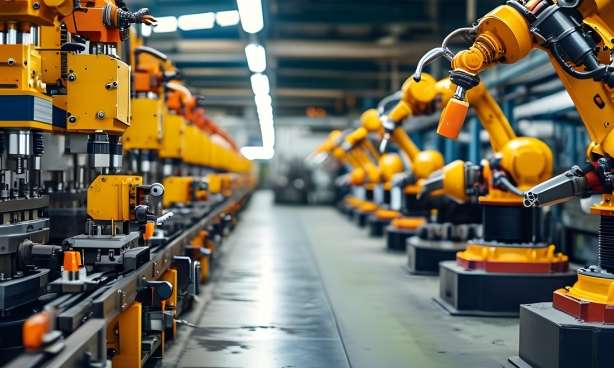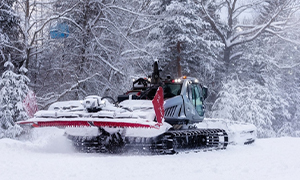-
QWhat is the reason why the V-belt cannot be tensioned?A
Possible causes:
1. The adjustable range of the center distance is too small
2. Belt elongation is too large, drive system size is too small (and overload)
3. Wrong belt length
4. The marked length of the belt does not match the actual length or is too long and too short to tightenSolution:
1. Redesign and increase the adjustable range of center distance
2. Recalculate the transmission system design data and modify it
3. Re-select the correct triangle belt
4. Select the correct identifier lengthV-belt -
QV-belt wear too fast cause?A
Possible causes:
1. V-belt use time is too long, the material aging
2. The transmission device design is unreasonable, resulting in the V-belt to bear too much tension
3. Improper installation, resulting in partial wear or vibration during operation -
QWhat is the cause of unilateral wear of V-belt during use?A
Possible causes:
1. Excessive tension
2. The mechanical equipment speeds up instantly to reach the transmission peak, causing the shaft to be pulled off, the active and passive wheels are not parallel, and the transmission Angle is generated
3. Mechanical installation error leads to the main and passive wheels are not parallel
4. The section Angle of the belt groove is wrong and asymmetricalSolution:
1. Readjust the tension force to the recommended conforming value
2. Mechanical equipment is strictly prohibited from speeding up initially, and uniform speed is adopted
3. Control the installation error and correct the parallel of the active and passive wheels
4. Measure the pulley groove Angle and replace the faulty pulley -
QWhat is the cause of V-belt fracture after operation and use?A
Possible causes:
1. Use tools to pry, causing damage to the cord
2. There is foreign body intrusion during operation, resulting in instant collapse
3. The transmission system of the device is stuck
4 Belts are not installed according to the designed number
5. Severe impact load or sudden excessive loadSolution:
1. Loosen the fixing bolts of the power end to reduce the center distance, and install in the state of no forced force
2. Install protective cover to prevent foreign matter from entering
3. Stop the device to rectify the fault
4. Install the belt according to the design number
5. Redesign according to impact load; Balanced start equipment to prevent sudden load -
QWhat is the reason for the bottom glue cracking during the use of V-belt?A
Possible causes:
1. Tension is too low
2.The environment is too high or too low
3. Contaminated by chemicals
4. Pulley diameter is less than recommended valueSolution:
1. Readjust the tension force to reach the conforming value
2. Eliminate or block heat sources, improve ventilation and cooling, and use anti-high temperature and anti-low temperature V-belts
3. Protect the V-belt from chemical pollution, using special structure triangle belt
4. Replace the belt wheel with the required diameter -
QBelt length deviation problem (different length)?A
Different models, length of the V-belt length deviation range is different, the implementation standard for the national standard GB/T11544, round mold (below 2700 length) production can meet the use of the matching group, plate (above 2701 length) production needs to be clear matching requirements, measuring the length of the matching group after delivery.
-
QWhat is the reason why theV-belt will drop powder during use?A
Possible causes:
During the initial installation of the new equipment, pulley finish is too low, causing the V-belt and the belt pulley to rub off the black powder
Solution:
Need to improve pulley finish
-
QWhat is the reason for the short period of fabric peeling on the belt after use?A
Possible causes:
1. The adhesive strength of the production of immature vulcanized cloth and bottom adhesive is not enough
2. The performance of the V-belt does not match the requirements of the equipment and cannot meet the requirements of the equipment transmissionSolution:
1. Replace the qualified product
2. Re-select the product whose v-belt performance matches the equipment requirements -
QWhy do one or more V-belts turn over or fall off the pulley during use?A
Possible causes:
1. The wheel groove is invaded by foreign bodies
2. Belt wheels are not aligned
3. Large tolerance and inconsistent length
4. The tension force is too low, the force is uneven and partial wear
5. Uneven force caused by uneven distribution of wire and rope in the production process leads to overturning
6. The belt wheel does not match the V-belt
7. Pulley diameter is less than the recommended valueSolution:
1. Add protective cover to clear foreign bodies
2. Recalibrate the alignment of the pulley
3. Measure and confirm the matching before installation to ensure that the length of the V-belt is consistent
4. Repair the tensioning device components and re-tensioning
5. Replace the triangle belt
6. Re-select belt and pulley
7. Replace the pulley with the proper diameter -
QWhat causes the V-belt to slip during use?A
Possible causes:
The tension force of the V-belt is insufficient, the surface of the belt groove is worn or polluted, and the transmission ratio is not matched.
Solution:
Adjust the tension of the V-belt to make it reach the specified value; Detect and replace worn or contaminated pulley grooves; adjust or replace the transmission system to match the transmission ratio.
-
QWhy is V-belt too noisy?A
Possible causes:
It is usually caused by the friction between the V-belt and the belt groove, the transmission system imbalance or improper installation.
Solution:
Detect and replace the V-belt and pulley groove with serious friction damage; Adjusting the balance of the belt; Follow the correct method of installation to ensure that the clearance between the V-belt and the wheel groove is appropriate.
-
QHow to select belt?A
Belt selection needs to include the power of the equipment, speed, diameter of the main/passive wheel, startup frequency, and whether there is a tension wheel.
-
QHow to detect fakes?A
Trademark specifications, smells
-
QIs the belt heat resistant?A
The temperature range of the belt is determined by the belt rubber type natural rubber (-30~70℃), neoprene rubber (-40~85℃), EPDM rubber (-40~120℃)
- Total Solution
-
Product and Services
-
Wrapped V-Belt
Rubberized fabric."Wrap" means that the core of the V-belt is protected by a covering fabric of cotton or polyester material. The covered fabric is coated with rubber to enhance wear resistance.
-
Cogged V-Belt
Raw edge cogged V-Belt have no fabric, and the use of a special rubber compound ensures greater wear resistance than the wrapped V-belt.
-
Agriculture belt
It is a transmission tool specially developed for agricultural machinery, which transmits power to agricultural machinery and drives its work.
-
Classical V-Belt
-
Ribbed belt
-
Agricultural machinery H series wrapped V-belt
Services -
- Tech Innovation
- Investor Relations
- About Us
EN
















